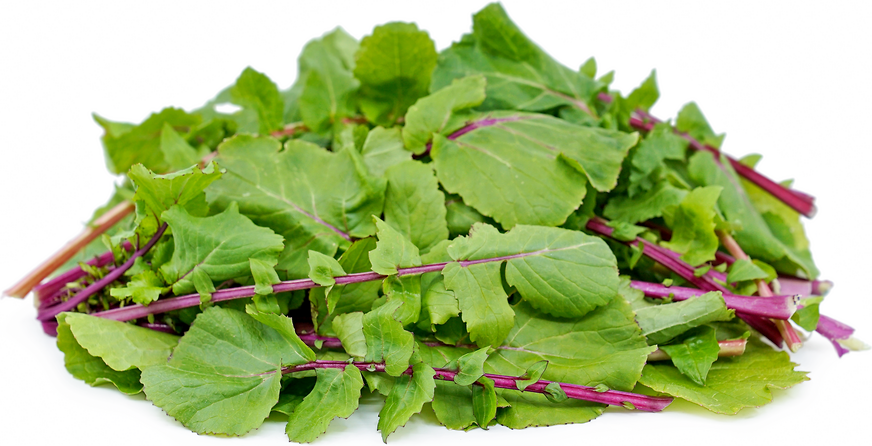


Sai Sai Radish Leaves
Estimated Inventory, lb : 0
Description/Taste
Sai Sai radish leaves are small to medium in size and are broad and oblong in shape. The green leaves are pliable, smooth, have scalloped edges, and grow in pairs up a reddish-purple stem with one large leaf at the top. They are also hairless, which means they lack the prickly texture often associated with radish leaves. Sai Sai radish leaves are tender and have a crunchy texture with a sweet and tangy peppery taste reminiscent of the radish root or mustard greens.
Seasons/Availability
Sai Sai radish leaves are available year-round.
Current Facts
Sai Sai radish leaves, botanically classified as Raphanus sativus, grow on an annual hybrid that only reaches fifteen centimeters in height and are members of the Brassicaceae, or mustard, cabbage, and crucifers family. Also known as Mullangi Keerai in Tamil or Mooli leaves in Hindi, Sai Sai radish leaves are predominately used in Asia for their tender and crunchy texture in soups, stir-fries, or as a garnish.
Nutritional Value
Sai Sai radish leaves contain calcium, vitamin C, iron, fiber, and phosphorus.
Applications
Sai Sai radish leaves can be consumed in both raw and cooked applications such as steaming, sautéing, and stir-frying. When used raw, the leaves can be incorporated into salads, dips, or as a garnish as the leaves are hairless and smooth. Sai Sai radish leaves are also used as a general green vegetable in curries, dals, stews, and soups. The leaves can be pickled or used to make kimchi, and they can even be incorporated into smoothies or pesto. Sai Sai radish leaves pair well with anchovies, chicken, pork, and beef. They will keep up to five days when stored in the crisper drawer in the refrigerator.
Ethnic/Cultural Info
Sai Sai radish leaves are popular in Asian cooking but are rarely found in restaurant dishes. They are primarily grown in backyard gardens for home cooking and natural medicinal remedies. In traditional Chinese medicine, Sai Sai radish leaves are used to help with circulation and digestion. Sai Sai radish leaves are believed to be good for chest congestion and for helping with liver and circulatory problems. They are classified in Chinese medicine as warming and spicy and can provide heat to stimulate the body.
Geography/History
The origins of the radish are largely unknown, but it is believed to have originated in the Mediterranean. It was then documented in Egypt around 2000 BCE as an important food source and was taken to China in 500 BCE and Japan in 700 CE. Today Sai Sai radish leaves can be found at select fresh markets in Asia and Southeast Asia, and the seeds are available on online catalogs in the United States.
Recipe Ideas
Recipes that include Sai Sai Radish Leaves. One
| Mildly Indian |
|
Mooli ki saag - braised radish leaves |




